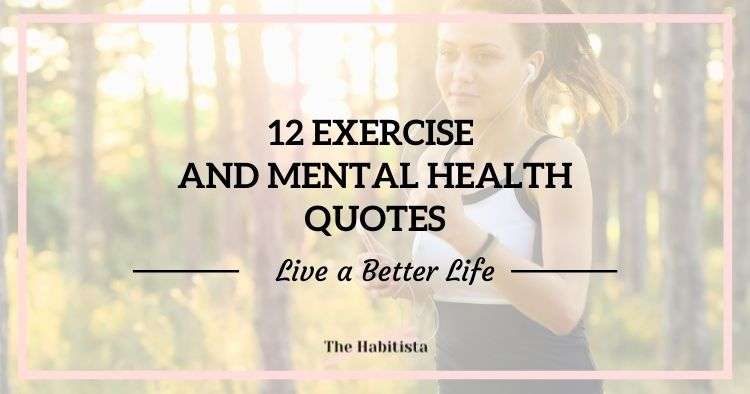Music therapy involves using a person’s responses and connections to music to encourage positive changes in mood and overall well-being. Music therapy can include creating music with instruments of all types, singing, moving to music, or just listening to it.
Music has powerful effects on the mind. Different styles of music can have a significant effect on a person’s mood very quickly, and it can help them experience and process a wide range of emotions, from happiness to excitement, as well as sadness, calmness, and thoughtfulness.
Making music can also be as beneficial as listening to music, and music therapy encourages people to actively create the music they find helpful to them.
This article explains what music therapy is, how it can help improve mental health, and its effects on different mental health conditions.
What is music therapy?

Share on Pinterest
Image credit: Getty Images
Music therapy uses the powerful abilities of music to improve a person’s well-being. It is an alternative to other types of therapy, such as counseling or cognitive behavioral therapy (CBT).
Music therapists use a person’s responses and connections to music to encourage positive changes in mood and overall mental mindset. Music therapy can include listening to music or creating music with instruments of all types. It may also involve singing or moving to music.
It can help improve confidence, communication skills, independence, self-awareness and awareness of others, and concentration and attention skills.
Live musical interaction between a person and their therapist is important during music therapy.
Improvisation can also be a key part of music therapy. This involves making music up on the spot in response to a mood or a theme, such as making the sound of a storm using drums and a rainstick.
How does music therapy work?
The way that music affects the brain is very complex. All aspects of music — including pitch, tempo, and melody — are processed by different areas of the brain.
For instance, the cerebellum processes rhythm, the frontal lobes decode the emotional signals created by the music, and a small portion of the right temporal lobe helps understand pitch.
The reward center of the brain, called the nucleus accumbens, can even produce strong physical signs of pleasure, such as goosebumps, when it hears powerful music.
Music therapy can use these deep physical reactions the body has to music to help people with mental health conditions.
History and origins
Music has been a part of human life for thousands of years. Specifically, experts have found instruments dating back to over 40,000 years ago, suggesting that humans’ desire to express themselves or communicate through music is deep rooted.
The use of music for therapy and healing dates back to Ancient Greece, but its therapeutic use today began in the 20th century, after World War II had ended. The earliest reference to music therapy comes from a 1789 article called “Music physically considered.”
The 1800s saw medical research into the therapeutic nature of music grow, and by the 1940s, universities were offering music therapy programs. E. Thayer Gaston, one of three men who pioneered the use of music as a therapeutic tool, had organized and promoted the practice so that it would become an accepted type of therapy.
Now, there are many music therapy associations around the world, and music therapists work in private care, education, and social care.
Music therapy vs. other forms of therapy
Music therapy does not rely on verbal communication, so it can be better for people who struggle to communicate verbally. This could be due to a disability, a neurodegenerative condition such as dementia, an acquired brain injury, or a mental health condition.
As CBT and counseling are both talking therapies, they may not be suitable for people who find verbal communication difficult. This is where music therapy can be beneficial.
Additionally, mental health practitioners can bring music therapy directly to a person, such as if they cannot get out of bed or are unable to get to a therapist’s office. Enjoying music therapy at home can also benefit children who want to be in a familiar environment during their sessions.
This is not specific to music therapy, though, as many other types of psychotherapy can take place in the home.
The skills a person learns in music therapy can be useful in their everyday life, too. They may even take up learning an instrument as a new hobby, which they can use as a tool for improving their mental health and coping with difficult situations throughout their life.
Benefits
There are extra benefits to listening or creating music that talking therapies may not be able to offer.
For instance, learning and practicing a piece of music can improve memory skills, coordination, reading, comprehension, and math skills, and it can also give lessons in responsibility and perseverance.
People can also enjoy a great sense of achievement from creating a piece of music, which can help improve their mood and self-esteem.
Music therapy can also introduce people to many different cultures, as clients can explore any type and genre of music during therapy. Understanding the history behind a piece of music can help people connect with the music they are hearing or playing.
Although self-expression is a part of talking therapy, music therapy allows people to express themselves in a creative way, which can be a more enjoyable way of exploring difficult emotions.
Lyric analysis is another accessible way for people to explore and process difficult emotions, experiences, or memories through music.
For example, a person can find themes and meanings within lyrics and offer alternative lyrics that apply to their life and experiences, which can help them find the words that represent how they are feeling if they are finding it hard to express this themselves.
Some of the documented benefits of music therapy include:
- improved self-esteem
- decreased anxiety
- increased motivation
- successful and safe emotional release
- increased verbalization
- stronger connections with other people
How it helps with anxiety
Many studies suggest that music therapy can reduce feelings of anxiety, including in people with cancer, those undergoing surgery, and individuals going into intensive care units. Some studies also suggest that music can reduce blood pressure and the heartbeat, which can have a direct impact on how stressed a person feels.
There is also evidence to suggest that those undergoing music therapy experience reduced anxiety immediately after the session, which indicates that music therapy could be a convenient way to reduce symptoms quickly.
Music affects the amount of stress hormones, such as adrenaline and cortisol, that the body releases, and reducing these hormones can help relieve symptoms of anxiety.
How it helps with depression
Studies suggest that music therapy can improve symptoms of depression, with those undergoing music therapy along with standard treatments for depression — such as talking therapy — improving more than people who only received standard therapy.
Listening to music can also release dopamine, which is a hormone that makes people feel good, and endorphins, which are hormones that can induce happy moods and relieve pain.
Although music therapy is not a cure for depression, it can offer short-term benefits by improving mood and encouraging connection and self-expression.
In children
Some of the benefits of music therapy for children include:
- offering fun ways of expressing thoughts and feelings
- practicing social interaction and communication skills
- encouraging creative play
- improving concentration and coordination
- increasing self-awareness
- increasing awareness of other people, particularly in group music sessions
- building self-esteem and resilience
- building language and listening skills
- strengthening family relationships
Summary
Although music therapy is not a cure for any mental health condition, it can be an effective and enjoyable tool for reducing the symptoms of numerous conditions, including depression and anxiety.
Music therapy offers people a creative and accessible way of expressing their feelings and processing their experiences. People have used music for its powerful effects on mood and emotions for a long time.
Aside from helping with mental health conditions, music therapy also has numerous other benefits, such as providing a creative outlet, expanding knowledge and cultural awareness, and improving cognitive skills such as memory.
Read this article in Spanish.
It may seem like we are living in an age of anxiety, where feeling worried, upset and stressed has become the norm. But we should remember that anxiety is a natural human response to situations.
It comes when we are not sure what is going to happen, or when we feel under threat. And even mild anxiety can have a negative effect on our ability to lead a productive life. It can interfere with being able to enjoy the simple things in life.
When we experience anxiety, our heart and breathing rates increase and many other systems in our bodies experience overload. Anxiety affects our general physical health as well as our emotions.
In my work as a music therapist, I’ve noticed the impact music can have on anxiety. For example, in guided imagery sessions, the therapist uses specially selected music and the client is invited to describe what they are feeling and what images the music conjures up. It’s amazing what insights can be gained from simply allowing yourself time to listen and talk about what you see in your mind’s eye.
These may be as simple as becoming more aware of how music can affect emotions, or be used to explore past experiences or future dilemmas. It can also be used to find a place of comfort and a secure base where physical and emotional balance can be found.
A recent experiment explored whether certain kinds of music can reduce anxiety during a complex task and concluded that some music is better at doing this than others.
Read more: Surprising ways to beat anxiety and become mentally strong – according to science
Also, a study based on measuring physiological and emotional responses suggests there are certain qualities in music that are better at helping people relax.
The speed of the music should be relatively slow, the melody should be simple, and the beat and harmony should not hold too many surprises. Other factors, such as the complexity of the music and – surprisingly – familiarity with the piece, were not so important.
In fact, knowing a piece too well was found in some cases to be counterproductive. The genres most likely to support relaxation are classical, soft pop and certain types of world music. These are found to largely contain the musical elements necessary to help a person relax.
Press play
With these musical elements in mind, here are eight suggested pieces of music that meet these criteria:
1 Ambient 1: Music For Airports by Brian Eno. This soundscape provides a wash of musical effects that echo the rhythm of our physiological functions, leaving space for us to attune to the slow tempo of the music. The album is described in one review as “the kind of music one might hear in heaven”.
2 Pieds-en-L’Air, from Capriol Suite, by Peter Warlock, a composer and former music critic. Known for his unconventional lifestyle, he died in 1930, aged 36. His musical legacy includes this soft and slow classical piece with a melody reminiscent of songs we may have heard as children.
3 Om Namah Shivaya by Deva Premal. The vocals of Premal and supporting music made by her partner Mital hark back to evocative chants from times past. The slow pace and almost hypnotic music combined with her clear vocals feel very supportive.
4 Someone Like You by Adele. While this hugely successful song explores the issue of loss, the slow tempo and cool accompaniment is found by many to offer a sense of calm and reflection. It has been claimed that the piece’s emotional strength is due to small, unexpected changes in the melody or “ornamental notes”, which create a melancholic tension.
5 I Giorni, by Ludovico Einaudi, an Italian pianist and composer who has written numerous film soundtracks. This piano piece, with its repetitive motifs and steady tempo, evokes a dreamlike state with moments of light and brightness.
6 In Paradisum, by Gabriel Fauré, a French composer who gained great popularity in his lifetime, but suffered from deafness in his later years. In this piece, from his Requiem, the choir and organ accompaniment provide a feeling of serenity.
7 Stopover at Djibouti by Anouar Ibrahem, a Tunisian oud player and composer. He is widely acclaimed as an innovator in his field, fusing Arab classical music, folk music and jazz. This world jazz piece has hypnotic motifs that can seem almost meditative.
8 Wilma’s Theme by Stefan Nilsson, a Swedish composer and pianist who is well known in is home country. This piece, which seems somehow familiar, has a simple melody and harmonies that provide a safe landing place.
This list offers some suggestions of music that could be used to help people relax. A favourite of mine, which I haven’t included, is the slow movement from JS Bach’s Double Violin Concerto. It never fails to give me a sense of feeling safe and grounded, something that can be so important when we may be feeling anxious.
It should be said, though, that many studies emphasise the importance of finding your own selection of music that works for you. Whatever your musical taste is, you have the edge on any prescribed playlist in finding what is best for you.



